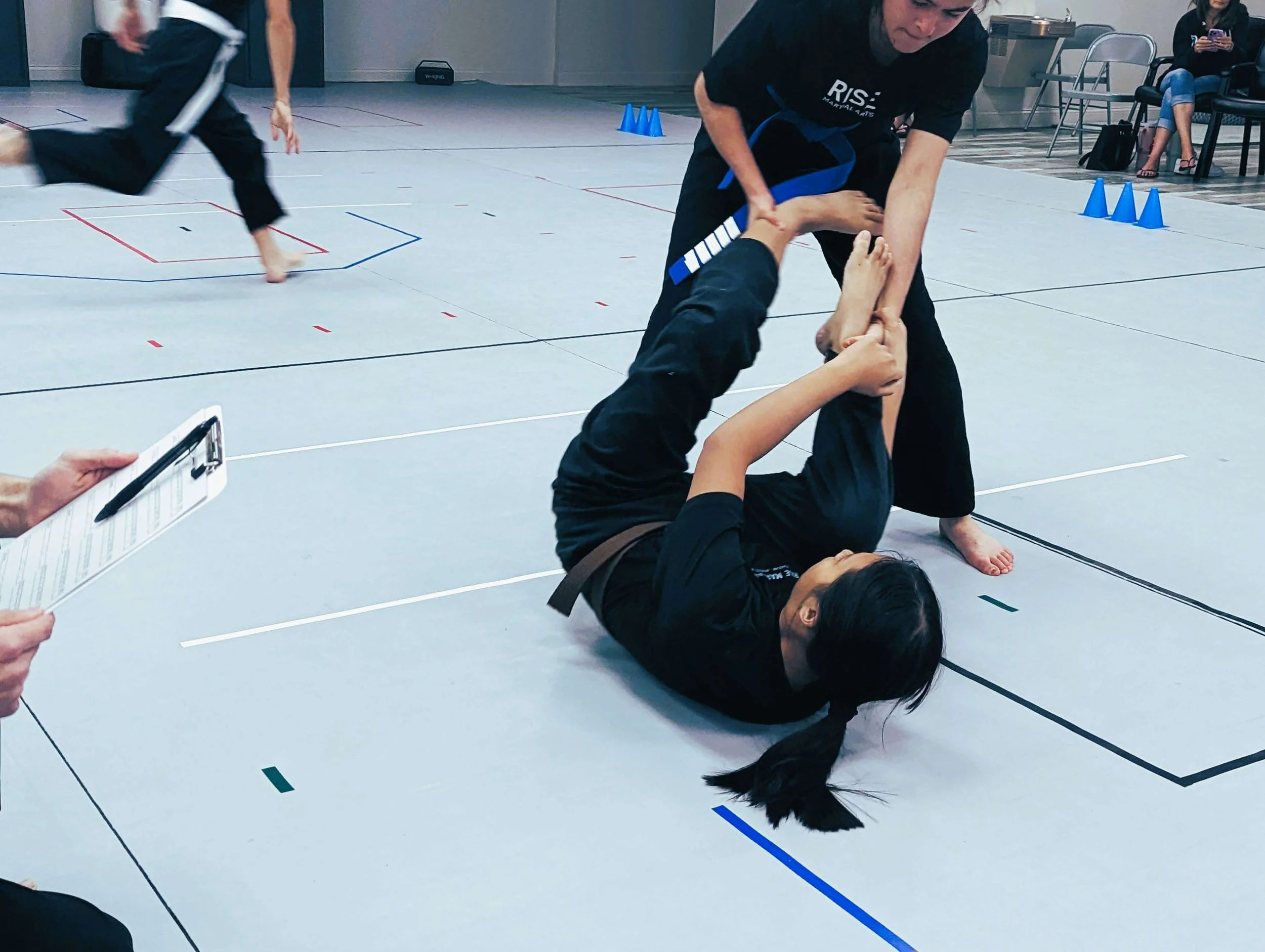Confidence, self-defense, & self-control that can last for a lifetime.

Build Lasting Confidence
Lasting, durable confidence comes from evidence. That is, evidence of ability. The knowledge and experience that you’re able to overcome challenges. Each class, our teen & adult students are given progressively harder and harder challenges to overcome. And we watch as they become more and more confident. It takes time. But it absolutely happens.
Learn Real Self-Defense
There are few feelings better than knowing that your teenager and/or yourself are well prepared for dangerous situations from aggressive people. Some training is far better than no training. At Rise, you’ll learn the gold standard for self-defense: Mixed Martial Arts, which has roots in Muay Thai, Jiu Jitsu, Boxing, Karate, & Taekwondo. Be ready for danger just in case it ever comes.
Gain Self-Control
Discipline: the ability to do what you should do even though you don’t feel like doing it. While much of the training at Rise Martial Arts is fun and exciting, the essence of martial arts is the ability to control yourself. When students realize they’re able to shape their body and actions during martial arts training, many lesser tasks in real life become easy by comparison.
Interested in a free trial class?

Don’t just take our word for it!
2,164 students trained and counting!
341 five-star reviews and counting!
Your first class is totally cost-free & pressure-free! See for yourself!
Interested in a free trial class?

FAQ
-
$145 per month. Month to month. No long term contracts.
-
Not at all. The first day is just a free trial to see if it’s a good fit for you. Enroll whenever you’d like.
-
The first one is at no additional cost. After that they’re $35.
-
Canton Schedule:
Monday: 7:10 PM
Tuesday: 5:20 PM
Wednesday: 7:10 PM
Thursday: 4:30 PM
Dexter Schedule:
Monday: 7:00 PM
Tuesday: 7:00 PM
Wednesday: 7:00 PM
Thursday: 7:00 PM -
For this age group: 45 minutes & very structured and fast-paced.
-
No. Students are never made to touch the opposite gender / sex.






